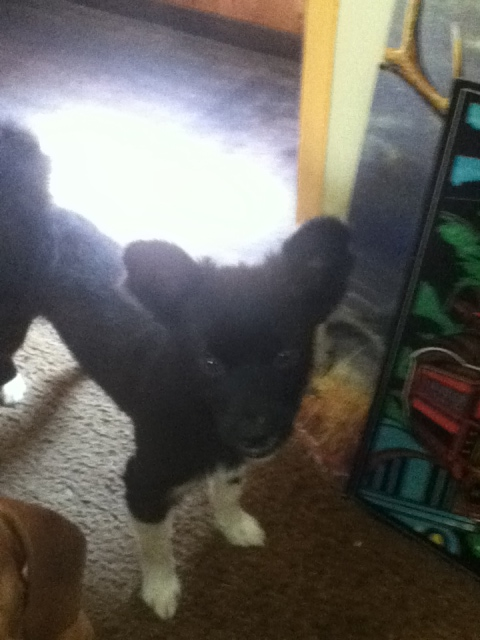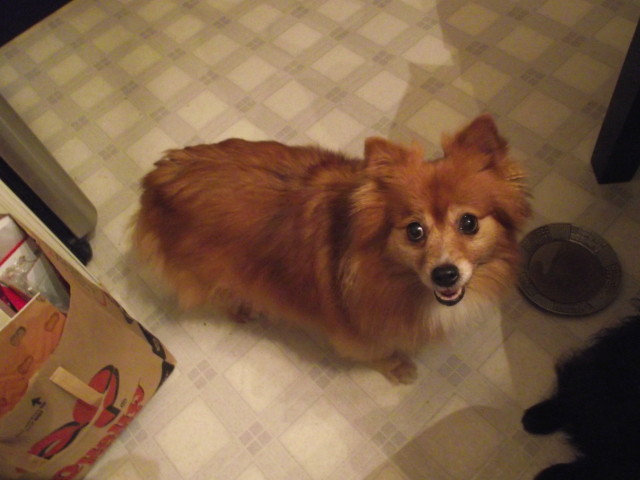QuestionHi- we have a 10 month old border/retriever mix who is very smart. I'm having luck training her to sit/stay, "go to your place", and to "get busy" (urinate) on command. HOWEVER, my question is that she will react appropriately 100% of the time to the "come" command when in training sessions but when she's in a situation where she really doesn't want to come she'll just look at me knowingly and bolt the other way. Is this her age, not enough training - what? Thanks for any help!
Sincerely,
"Tired of calling"
AnswerDogs are individuals. The problem may more the dog's individual personality than any of your training. "Come" needs to be taught as part of proper pack status and obedience. The
dogs see all the people and dogs in the household as a pack with each having their
own rank in the pack and a top dog. Life is much easier if the 2 legged pack
members outrank the 4 legged ones. You can learn to play the role of top dog by
reading some books or going to a good obedience class. Start at
http://www.dogsbestfriend.com/
If you dog is at least 4 - 5 months old, start with a good 6' leather leash and
a sturdy slip collar, the metal chain
ones with the rings on each end. You want the shortest one that will go on
and off easily. If you walk with the dog on the left, pull the chain through
one loop forming a "P". Facing it, slip it over its head. The free end
should come over the neck to the leash, and the other end should drop slack
when there is no pull on the leash. Before 4 months use a conventional flat
collar to protect the tender young neck.
With the dog at the end of the leash, call its name and "Come" in a firm
voice. If it comes, praise it lavishly and pet it. If it doesn't come, repeat
the
command and give the leash a light snap. Keep it up with firmer leash snaps
until the dog does come. Do not forget the praise. Then switch to a longer
leash or rope, about 25'. When it comes well on the longer leash, you should
be
able to go to
off leash in a fenced area, etc. Once the dog is doing well, introduce come,
treat. This is for emergencies only when the dog has gotten loose accidentally.
Use it routinely and you will have nothing to fall back on when your dog is
headed for a busy street. "Name, come treat!" is little different from the
regular "Name, come!", except the dog gets a great treat when it comes. We are talking
a hot dog, cheese, etc. much better than any treat you use routinely.
Relying on come to control most dogs loose outside is risky, and I do not
recommend it. Dogs are individuals. Some can be trained to come when you have
no way to enforce it, but some will never be completely reliable even for the
most experienced trainers.

 Helpppp
Question
Maddy
I have a 9 month peekapoo. She is pad tr
Helpppp
Question
Maddy
I have a 9 month peekapoo. She is pad tr
 ideas of what breed dog this is?
Question
dog dog
i was wondering if anyone
ideas of what breed dog this is?
Question
dog dog
i was wondering if anyone
 Pomeranian or Pomeranian mix
Question
Brandy my Pomeranian
Hi I have a Dog na
Pomeranian or Pomeranian mix
Question
Brandy my Pomeranian
Hi I have a Dog na
 8wk old pup biting
Question
pebbles
hi i wonder if u can help me my
8wk old pup biting
Question
pebbles
hi i wonder if u can help me my
 New Eskimo puppy
Question
Honey the shy american
I just got my 10 week o
New Eskimo puppy
Question
Honey the shy american
I just got my 10 week o